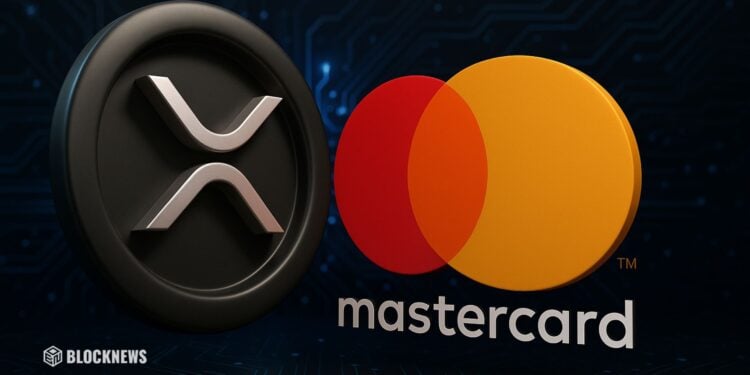- Ripple partners with Mastercard, WebBank, and Gemini to test using its RLUSD stablecoin for settling fiat credit card transactions on the XRP Ledger, pending regulatory approval.
- Stablecoin-based settlement could make payment processing faster and more efficient, allowing banks and networks to move funds in near real time while improving liquidity and transparency.
- RLUSD, regulated by NYDFS and custodied by BNY Mellon, has grown to a $1 billion market cap, reinforcing Ripple’s expanding influence in institutional finance and digital payments.
Ripple just made another big move in its push to bridge traditional finance with blockchain. The company announced on Wednesday that it’s teaming up with Mastercard, WebBank, and Gemini to explore using its RLUSD stablecoin—a U.S. dollar-backed token—for settling fiat credit card transactions directly on the XRP Ledger (XRPL).
If approved by regulators, the pilot could begin onboarding RLUSD in the coming months, followed by integration into Mastercard and WebBank’s back-end systems. The idea: make settlements faster, cheaper, and fully transparent—without changing how people actually pay at checkout.

A Step Closer to Real-World Payments
“Regulatory approval is a key part of this effort, and it’s something we take seriously,” a Ripple spokesperson told Decrypt.
They emphasized that since this involves both a regulated U.S. bank and stablecoin-based settlements, the rollout will only proceed once all green lights are secured.
“The regulatory process will guide the timing,” they added, “and all partners are aligned on advancing this initiative responsibly and in full compliance with applicable frameworks.”
This partnership builds on Ripple’s earlier work with Gemini and WebBank, which launched an XRP version of the Gemini Credit Card earlier this year. Instead of cashback or airline miles, users earn XRP rewards for every purchase—essentially bringing crypto utility straight into daily spending.
RLUSD Settlement: Faster, Smoother, Smarter
In this next phase, all Gemini Credit Card transactions—including those tied to Bitcoin or Solana rewards—could eventually settle via RLUSD on the XRPL.
Ripple says stablecoin settlement could make the process nearly instantaneous, improving liquidity visibility and cutting down the delay between transaction and final settlement.
“By using RLUSD, banks and networks could move funds in near real time,” the spokesperson said. “It’s about enhancing how money moves between trusted partners—more efficient, more transparent—without changing how people pay.”
That’s the subtle but powerful part: customers won’t notice a difference at checkout, but behind the scenes, the entire flow of money becomes cleaner, faster, and cheaper to manage.
RLUSD’s Growth and Institutional Adoption
Launched last December on Ethereum and the XRP Ledger, RLUSD has quietly grown into a $1 billion market-cap stablecoin, now the 11th largest globally, per DefiLlama.
In September, Ripple expanded RLUSD’s reach through Securitize, allowing institutions to use the token in tokenized money market fund exchanges—essentially a bridge between traditional finance and digital assets.
Regulated by the New York Department of Financial Services (NYDFS) and custodied by BNY Mellon, RLUSD has become Ripple’s key pillar for enterprise liquidity management and institutional-grade settlement.
Ripple’s Broader Momentum
The announcement follows Ripple’s $500 million strategic raise at a $40 billion valuation, further strengthening its position as one of the few crypto-native firms fully integrating with traditional financial infrastructure.
As for XRP, the token has seen some selling pressure amid broader market volatility—down about 2.6% in the last 24 hours, trading near $2.26 at press time.
Still, with Ripple’s expanding network of heavyweight partners and RLUSD’s growing footprint, it’s hard to ignore the bigger picture: the line between crypto and mainstream finance is blurring fast—and Ripple’s at the center of it.














